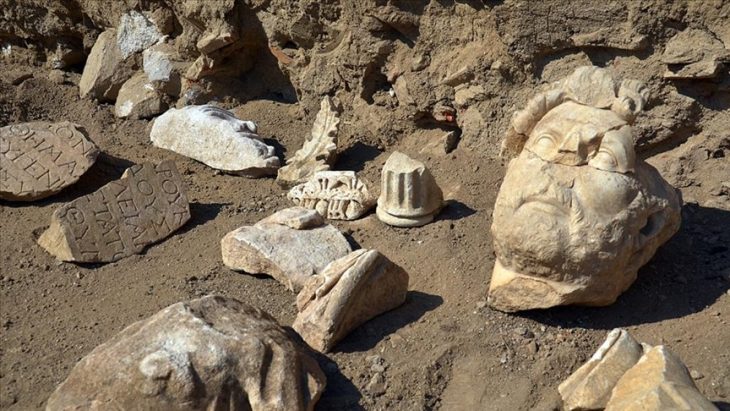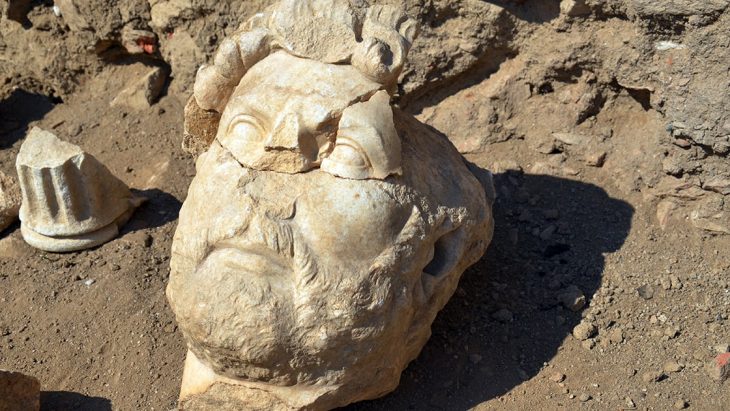Archaeologists have unearthed fragments of a marble statue depicting Roman Emperor Publius Aelius Traianus Hadrianus, also known as Hadrian.
Alabanda, nestled within the boundaries of Doğanyurt village, boasts a rich history. Its name itself, derived from Carian words for “horse” (Ala) and “race” (Banda), hints at a vibrant past. Legend, as chronicled by Byzantine historian Stephanos, suggests the city was named after King Kar’s son, Alabandos, who triumphed in a horse race.
Professor Ali Yalçın Tavukçu of Erzurum Atatürk University spearheads the ongoing excavations at Alabanda. This sprawling city, encompassing a massive 500 hectares, is considered one of Anatolia’s largest ancient settlements.
The unearthed fragments, believed to be around 1,900 years old, belong to a majestic statue of Emperor Hadrian. Scattered across various locations within the parliament building’s excavation site, these pieces—including portions of the head and body—hold immense historical significance.

The excavation team is diligently searching for the remaining parts to complete the statue, estimated to stand at an impressive 2.5 meters tall. Upon reconstruction, this remarkable artifact will find its rightful place in the Aydın Archaeology Museum.
Umut Tuncer, Aydın Provincial Culture and Tourism Director, highlights the significance of the discovery. He emphasizes the site’s historical context – the ancient parliament building, one of Anatolia’s largest. “We prioritize showcasing artifacts within their original context,” Tuncer explains. “Once the statue is complete, it has the potential to attract a surge of visitors, given its rarity.”

Professor Tavukçu elaborates on the find, revealing that the past year saw intensified efforts in the “billiardium” (council building), one of the excavation’s key areas. “This year,” he says, “we unearthed fragments of an armored emperor statue, resembling a portrait sculpture. The scattered pieces will be meticulously reassembled, transforming it into a significant museum exhibit.”
Hadrian, known for his frequent visits to Roman provinces, undertook numerous expeditions throughout Anatolia. The archaeologists theorize that the statue might have been accompanied by an inscription, possibly erected to commemorate Hadrian’s arrival during his reign (117-138 AD).
Alabanda boasts a treasure trove of Hellenistic and Roman remnants. Towering walls, a grand theater, a senate house, a people’s assembly structure, the awe-inspiring Temple of Apollo, a bustling marketplace (agora), and impressive mausoleums stand as testaments to the city’s glorious past. Further enriching its historical tapestry is the Roman-era aqueduct gracing the southern Kemer Creek.
The unearthing of Hadrian’s statue is a thrilling addition to Alabanda’s captivating narrative. It offers a glimpse into the city’s relationship with the Roman Empire and sheds light on a significant historical figure. As the excavation continues, further discoveries promise to unravel even more secrets of this ancient Anatolian city.
